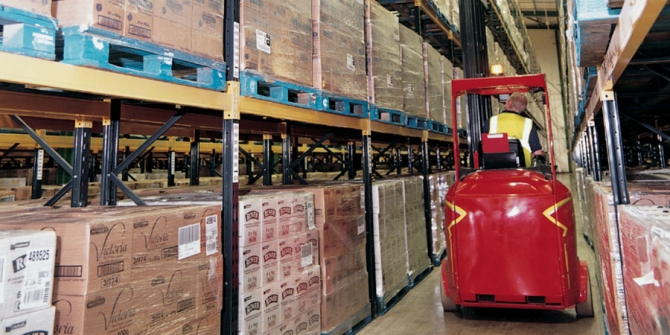With storage and warehousing now seeing the second highest rate of handling injuries amongst all UK industries, it’s vital that managers and supervisors inspire employees to make safer choices. Mishaps like slips, trips and falls may be common in the warehouse environment, but a culture of safety won’t happen by accident.
Although warehouse injuries tend to be less severe than those in manufacturing or transportation, accidents are also far more frequent. Creating safer and more efficient warehouses demands managers and employees work together to eliminate hazards, identify dangerous practices and communicate on problems effectively. While business owners, warehouse managers and supervisors remain ultimately accountable, all employees should see safety as their responsibility.
Such a culture of safety brings enormous benefits for employees: reducing injuries, negating long-term health problems and increasing job satisfaction. Yet there are even greater gains for business owners, who can cut absenteeism, improve productivity and lower expenditure. With an injured employee costing as much as £45,000 over just three months, business owners should question any assumption that improving safety brings no tangible returns.
Keep talking
Building a true culture of safety first demands a robust and reliable communications system that allows staff at all levels to report, review and resolve hazards easily. This is especially crucial for lone workers; those who work at unusual times or in isolated areas of a warehouse and may not have a supervisor nearby in an emergency. In these situations, it’s essential that employees have a reliable means to summon help as quickly as possible.
With many staff already bringing their own mobile devices to work, mobile apps offer an easy, convenient and low-cost way to improve warehouse communications, increase employee protection and raise the alarm when necessary. For instance, LONEALERT’s smartphone app can be quickly installed from any of the major app stores, providing immediate employee location tracking and a designated panic button for emergencies. Where warehouse employees aren’t permitted to bring smartphones with them on shifts due to productivity and security concerns, LONEALERT’s Man Down Alarm can also provide regular check-ins to confirm lone worker safety, as well as automated alerts to slips, trips and falls caused by hazards such as forklift truck spills.
Lead by example
With the lines of communications established, building a culture of safety starts at the top. Circulating a written statement of intent is a fantastic way for business owners to prove they’re serious about rigorously enforcing safety to everyone in the organisation. A willingness to invest in continuous staff training and a comprehensive risk assessment is also essential, allowing any significant hazards to be addressed, such as materials handling, forklift use, or working at height.
Meanwhile, warehouse supervisors should stress the importance of taking immediate action whenever a safety hazard is identified. Businesses can support this by giving managers safety-related KPIs as part of their career progression goals, allowing their knowledge and approach to be kept under regular scrutiny.
However, supervisors also need to evaluate the causes of accidents rather than simply record the outcome. A supervisor may know that an employee was involved in a fall, but unless they also understand it was caused by oil leaking onto an access ramp, they can’t prevent it from happening again. To that end, supervisors must be able to take detailed notes on the causes of incidents easily. This is another area where mobile apps can help; for example, the management suite in LONEALERT’s smartphone app quickly and simply preserves a supervisor’s findings for future audit and review. Equally, SiteTIDY’s mobile app and web-based management system makes it easy to take a photo of an incident and complete a non-conformance report, automatically logging it with the site’s back-office and emailing it to relevant parties for review.
With employees now very much being led by example, regular safety meetings can also be scheduled. These meetings should include all warehouse employees, as well as a management representative, to ensure that any safety issues are openly addressed. Employees from across the business can also form an independent safety committee to review any issues, since risks can often be better understood when employees from all levels of an organisation are involved.
Of course, all these procedures cannot simply be established and forgotten. The continuous involvement of staff at every level is essential and safety practices must continue to adapt to changing conditions inside every business dynamically. Ultimately a culture of warehouse safety isn’t a rulebook, it’s a mind-set.

